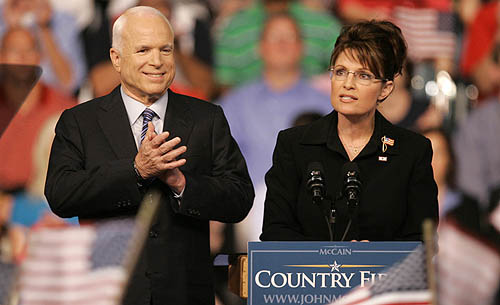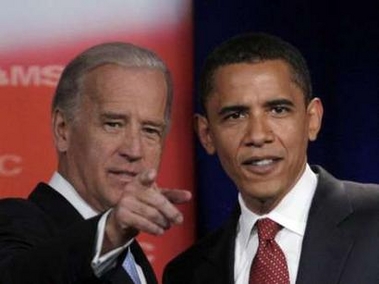
I watched Teddy and Hillary, Bill and Joe, and even Barack and Michelle and while I liked much of what I heard and was impressed with the production values and dramatic flair demonstrated by the producers of the DNC convention, I was left thinking to myself, “This is why liberals have so much trouble marshaling consensus” At the end of the day, liberalism is unable to lock down the central narrative and unify the party or the community because it is, at its core, sympathetic to pluralism. If the only and ultimate aim is unity, then liberalism is an unlikely means to that end. So the question for liberals (including evangelical Christian liberals and moderates) is never, are we unified, but are we unified enough? Are we cohesive enough?
I had an interesting week. At night I would put my son to bed and adjourn to my office to get some work done knowing that my efficiency would suffer because it was time for the 2008 DNC Convention. I have too much of the Protestant work ethic in me to just sit and watch television for several hours so I paid bills, filed away papers that had been collecting on my desk, and reread a draft of several chapters from the forthcoming Lost in the Middle?. Next week I plan to paint some unfinished bookshelves and collate study materials for my students as Bush and Cheney, Giuliani and Romney, McCain and Palin make their case at the 2008 RNC convention. For this act of responsible citizenry, and for having spent most every evening watching political speeches and monopolizing the TV, I now owe my wife an entire week of watching obscure French films.

What struck me as I watched the Democrats was their half-hearted enactment of the basic strategies of community building, strategies defined and explored at length in chapter 11 of Lost in the Middle?. We know, because sociologists have studied this issue at length, what makes for strong community identities. First, you need a central story with which everyone can identify. Second, you need shared values i.e. things everyone loves and is willing to fight for and to defend. But these internal pressures are only part of the story. Strong communities, be they churches or political parties, are also sustained by external pressures i.e. shared enemies. In many cases a well crafted story can so enmesh internal and external pressures that they seem to be two sides of one coin.
Knowing what we know about forming and maintaining strong communities of highly motivated people, it is no wonder that both political parties follow the same basic strategies. First, recognize (though don’t necessarily publicly highlight) that any group of more than one person has some form of pluralism, and then find ways of hiding, masking, or explaining away this diversity as something superficial. Second, promote a familiar unifying narrative that provides common cause and gives everyone something to fight for. Third, emphasize and perhaps exaggerate the dangers posed by outsiders and then hit the other guy hard! Deviate from this basic strategy at your own risk.
This past week we saw the Democrats follow each of these steps and we’ll see the Republicans do the same in the weeks to come. Coming into Denver the basic pluralism interior to the Democratic party was obvious as almost half of the delegates were pledged to Hillary Clinton and not the presumptive nominee Barack Obama. By putting both President Clinton and Senator Clinton on the platform in prime time and carefully orchestrating their endorsements of Obama, the Democrats were in essence saying, “pluralism, what pluralism?” Of course no one bought it. Divisions remain because every social entity has internal tensions and divisions, and historically one of the defining marks of the Democrats has been their persistent and visible internal divisions. So the Clinton faction within the party remains a faction, but it also remains within the party. The interesting contrast is to note the ways in which the Republicans deal with their internal divisions. You will not see any of the pro-gay rights Log Cabin Republicans on the floor of the upcoming convention. Pro-choice speakers may take the stage, but they will likely stick to topics other than abortion. The point here is that Republicans have traditionally been better at hiding their own internal divisions, in part because their conservative ideology is much less comfortable with the idea of nonconformity, so they feel less conflicted about hiding their nonconformists. Democrats, on the other hand, are of two minds about party divisions and diversity. On the one hand, everyone wants to win and that means putting on a slick convention with obvious demonstrations of party unity. But on the other hand, most liberal Democrats want to be sure that they do not send the message that diversity is actually a bad thing. The liberals walk a constant sociological tightrope.
With Senator Kennedy out of surgery and back on stage, one of the messages of the week seemed to be, “don’t worry, we’re still your daddy’s Democrats.” Obama’s story may be new and unique, but the Democrats went to great lengths to make sure that the familiar Democratic narrative was intact: personal liberties, support for the middle and lower class, the maintenance of a social security net. The emerging consensus was that Biden was selected to run as VP precisely because he reinforces this strand of the Democratic message. The thing to note from the perspective of building strong communities is that the internal sociological pressures (the things we can agree on and fight for) are fairly diffuse for the Democrats in large part because of their internal diversity. Inner city constituents want different things from rural constituents. Latino Democrats are willing to fight for things that Jewish Democrats might have no strong feelings about and vice versa. Woman Democrats were excited at the possibility of a woman at the top of the ticket just as African Americans were excited by the possibility of an African American nominee. They want a big tent party, but as the tent fills up the internal cohesion of the community weakens.
The Republican party tends to do a better job of presenting a unified and coherent picture of its goals. But behind the public platform and the appearance of unity, there are two different versions of Republican narrative that occasionally clash with one another. Interestingly, Bush Sr. and Jr. represent these diverse narratives. The classic Republican story is libertarian in its outlook, aiming constantly for a small non-interventionist government. It is conservative primarily in its vision of the limited role of the federal government. The newer more activist Republican narrative preserves the rhetoric of small government but is much more willing to flex government muscle in order to preserve traditional social norms and American international influence. The two wings of the party have struck a kind of detente since the presidency of Reagan and have managed to win elections in part by refusing to air their internal party disputes in public. By picking Governor Palin as a running mate, Senator McCain has managed once again to bring together both of the Republican variants on a single ticket. In this sense his decision is far from a “political Hail-Mary” as some pundits are calling it, and in fact represents a classic move to consolidate the GOP.
As you watch this week’s Republican convention or go back over online videos of the Democratic convention, pause to look at the faces in the audience. When are people having the most fun? The delegates seem to enjoy themselves most when the main course is served, what the pundits call the “red meat.” “No way, no how, no McCain.”Hillary cried. “Four more months, four more months”, the Democratic delegates chanted. “Enough,” Obama shouted. These were the memorable lines, and the times when the crowd boasted the biggest smiles and clapped the loudest. I’m sure the Republicans will do the same. They’ll mock Biden for not being able to decide which state he’s from, Delaware or Pennsylvania. Over and over they’ll show tape of Hillary and Biden going after Obama in the primaries. The GOP delegates will laugh and clap and boo at all of the right moments and they’ll enjoy themselves as much as the Democrats did at the expense of “the other guy” and now “gal.” The Networks will love the spectacle. NPR and the highbrow press will bemoan the lack of serious dialogue on the issues, but will still play the laugh lines. But most importantly, the red meat will do its sociological job. The political attacks will unify the community by emphasizing the perceived threat and reinforcing external pressures. “We must come together to defeat X because X is going to send your babies to Iraq, tax your children into poverty, destroy our environment, or give our country over to illegal immigrants.” The actual threat is much less relevant than the perception of a threat; the ultimate goal being to convince those who do not yet belong to the Democratic or Republican community to run to the safety of the group. In this sense our national election day is almost a national initiation day, where we all decide what tribe to join, Dems or GOP, Montagues or Capulets, Bo Sox or Yanks.
Take all of this basic sociological information about how best to form strong social bonds, and throw in a couple hundreds of millions of dollars in donations and swag, and you have the spectacle of the 2008 political conventions. Poor London, not only do they have to follow China’s opening ceremonies, but now their prime minister has to draw a crowd of 80,000 at Wembley Stadium just to keep up.
Honestly, we don’t need another political blogger, and if we did I wouldn’t be qualified or connected enough to contribute much to the conversation. But for Liberal Evangelicals there are some important lessons we can learn from these conventions. As moderate Christians who desire to have communities that are both Christ centered and inclusive we know first hand how hard it is to live with diversity. On one level it is fair to say that all groups must live with some internal diversity simply by virtue of being groups. But as moderate Christians we seek to maximize not minimize diversity and we are unable and unwilling to hide the fact that this is what we are doing. The Democrats take their fringe members and put them way up in the nosebleed seats so that the cameras cannot find them, while the Republicans hide their malcontents in other states – I’m convinced that the Log Cabin Republicans will spend the convention week in Cheney’s secret bunker under close guard. Liberal Evangelical churches cannot do this, and thus our cohesiveness takes a sociological hit.
Democrats and Republicans want nothing more during the week of their conventions than for everyone to be “on message.” Monday we talk about the economy, Tuesday we emphasize education, Wednesday is National Defense, and Thursday is “Honoring the Future” day – or some other focus-grouped blandness. Everyone hits their talking points and we present a unified message and united front. Of course the Democrats are notoriously bad at this and the press love Senator McCain precisely because he has been willing in the past to go gleefully off message. The challenge for Liberal Evangelicals is what Wildman and Garner have called “core message pluralism.” We are unable to present a unified story precisely because we do not have one! We’re Evangelical and this means that for all of us Jesus Christ is of central importance – lose this centrality and we lose the Evangelical moniker. But we’re also Liberal and this means that we recognize and respect that there are many diverse ways in which people relate to Christ and understand the role of Jesus in their lives and the universe. In a sense, we have a single talking point and narrative: Jesus, his life and teachings. However, when pressed for specifics (and we don’t usually like this any more than politicians do) we will give many different answers.
- Jesus’s sinless life and death atones for my sins and covers my blood guilt.
- Jesus’s life of radical service is the blueprint I strive to follow.
- Jesus showed the way of discipleship by following God even unto death.
- Jesus’s defeat of death in resurrection opens the way for me to eternal life.
These are just four of the thousands of different versions of Christian story that Evangelicals share. As Liberals, we are unwilling to say, “This one! This is the one right here. Believe it or get out!” In pure sociological terms the smart thing to do would be to call in a Biden or Palin to strengthen our core message (in this sense Paul wasn’t a bad VP selection for the early Church). Most Christian groups, be they individual congregations or denominations, do this very thing. They heighten group identification through the promulgation of doctrinal standards or the elevation of charismatic figures. Our strategy is odd. It says merely that Jesus Christ will remain the center of our worship and teaching, and allows for tremendous freedom to interpret that in contradictory directions.
Sociologically and politically, things already sound pretty bleak for Liberal Evangelicals. We don’t do a good job of disguising our internal diversity and we make matters worse by refusing to promulgate a single simple message. But the political strategy that we are worst at is generating the “red meat.” We certainly do not buy into the simplicities of biblical literalism, but we empathize with the desire for surety and certainty that drives some people to turn to a text for quick and uncomplicated answers. We are unwilling to take Jesus from his central place in our lives and worship, but empathize with those who are so fed up with the wrongs that have been committed in Jesus’s name that they only see a way forward by leaving that name behind. As moderates we are inefficient and fumbling fulminators. We don’t do red meat, not because we’re watching our cholesterol, but because when we throw meat to one group we can’t help but feel for the group that provided the flesh! Extremely liberal churches sometimes thrive in niche markets by railing against conservatives. Fundamentalist Christians frequently thrive by demonizing homosexuals, liberals, Hollywood, and the French – especially the French. Let’s be honest. In sociological terms this strategy works, and it works from pulpits and soap boxes, in sermons and stump speeches. But as Liberal Evangelicals we cannot use it. We’re like little Frodo Baggins holding a ring of tremendous power, but knowing that to use it would make us something other than what we are.
So I sit here on the Saturday between the political conventions a bit envious. I wish that I had a fuller toolbox at my disposal. I wish that I had an internet donor list in the millions. I wish that I could call on personal credentials as a war hero. I wish I could single-handedly build a community of Liberal Evangelical churches through the power of my rhetoric. I wish that I could denounce the radical liberals who have cast Jesus aside in their desire for a more palatable religion. I wish that I could deliver snappy one-liners about Fundamentalists with the joy that Bill Clinton so obviously feels as he laughs off Republican critics. Most especially I wish that I could, just once in my life, have a balloon drop. But I don’t get any of these things. We don’t get any of these things. Instead, we get Jesus, his story, his compassion, his teachings, his death and resurrection. And the open question (frighteningly open!) is whether or not this person will be enough to unify us.



